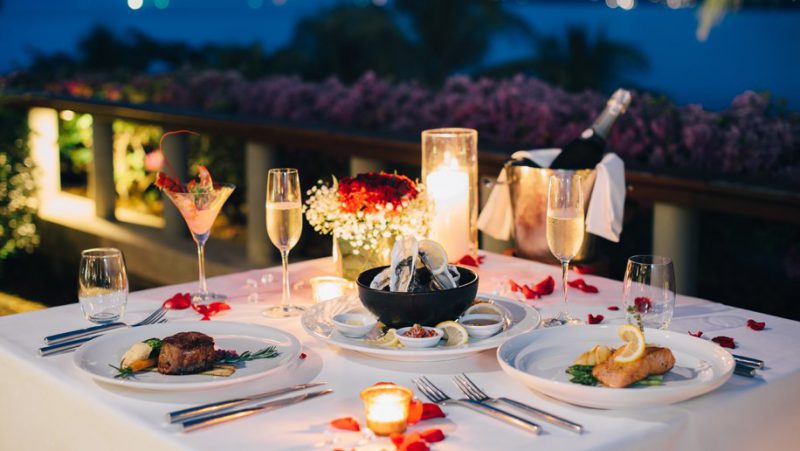Restaurant Guests Remain Hyper Focused on Cleanliness and Safety
Dining establishments are bolstered by pent-up demand and growing customer satisfaction
March 25, 2021

2021 begins with encouraging news for the restaurant industry. With same-store sales growth of -4.9 percent and traffic growth of -12.2 percent, January was the best performance for restaurants since the beginning of the pandemic almost a year ago.
This is good news for the restaurant industry, which struggled the last two months of 2020, as sales and traffic growth worsened compared to the COVID-era peak achieved in October. Likely contributing to some of the consumer pent up demand for restaurant spending was a combination stimulus check distribution, a sense of optimism from turning the page on 2020 and the increased prospect of additional government aid soon.
There also continues to be resiliency from restaurant operators, and perhaps some goodwill from restaurant guests as well, according to online reviews and comments that show a more positive tone now versus a year ago for key attributes of the restaurant experience.
Guest sentiment based on restaurant food became 3.8 percentage points more positive in January year over year. However, less than 50 percent of all reviews centered around food were classified as positive during the month, while the industry had consistently been achieving over 50 percent positive food sentiment during the previous five months. As sales and traffic experienced an upswing in January, it may have become harder to keep up in terms of consistency and execution, especially considering the reduced staffing levels experienced by most in the industry.
The story is similar when analyzing restaurant service. The good news is that guests continue to rate their service experiences most positively than they did a year ago (before COVID had hit at a significant national level). Although over 50 percent of service-centered reviews were classified as positive during January, the month also experienced the lowest percentage of positive service mentions since July. Like food, an increased pace of business may also be causing pressures on the service model of restaurants.
Since last summer, an emerging theme in online social data related to restaurants was how ambiance net sentiment started to improve year over year. But it was not the usual components that usually come up when discussing restaurant ambiance that were driving this improvement in guest sentiment. Rather, it was something as unglamorous as cleanliness that guests cared about more than anything else. Given that a global pandemic had just hit our country it was obvious these were not normal times and guests were rightfully hyper-focused on their safety when visiting restaurants.
Nine months into the pandemic, guests have learned to live and adapt to their new conditions. Has their perception on restaurant ambiance changed? Have they gone back to focusing on other, more elevated aspects of the restaurant’s atmosphere when they discuss their restaurant experiences online?
Recent data from Black Box Guest Intelligence reveals not much has changed. Guest sentiment based on restaurant ambiance became more positive by 7.5 percentage points year-over-year during the fourth quarter of 2020. But the two subcomponents of ambiance that saw the biggest improvements in net sentiment were cleanliness, which improved by 18.3 percentage points year over year, and the newly tracked “safety” category, which became 17.3 percentage points more positive during the period.
The good news is overall, restaurants keep doing a good job at implementing and executing on their policies to keep their restaurants clean and safe as we continue to face this health crisis. Instead of restaurants showing fatigue due to the length of the pandemic and safety practices slipping up, guests continue to be increasingly satisfied with what they see once they decide to dine out or order some food for off-premises consumption. Cleanliness and safety continue to be at the forefront of their concerns, and for the most part restaurants are succeeding in meeting those expectations.
By comparison, ambiance sentiment based on restaurant appearance only improved 7.2 percentage points year over year during the fourth quarter, while ambiance based on restaurant décor declined 5.0 percentage points during the same period.
Among the top 25 largest markets in the country, Orlando, Florida, and Raleigh, North Carolina, were the leaders in restaurant guest satisfaction during January. Orlando was the metropolitan area with the most positive guests based on restaurant food, beverage, and service. The most positive guests based on restaurant ambiance, value, and intent to return were in Raleigh.
For major markets with the lowest restaurant guest sentiment during January we find some that have been among the most hurt by the sales downturn in recent months. Seattle was the major market with the biggest decline in same-store sales year over year in January, and it is also the DMA with the lowest guest sentiment based on restaurant food and intent to return during the same month. Detroit was the major market with the lowest guest sentiment based on restaurant service during January, while Seattle had the lowest net sentiment based on restaurant value. Both were among the 5 worst performing major markets in January based on same-store sales growth.
To further illustrate the relationship that exists between restaurant sales and guest sentiment at the local level, the top 10 major markets based on their same-store sales growth in January had guest sentiment 12.3 percentage points more positive based on restaurant food than the 10 markets with the worst sales growth results. The differences were also 12.3 percentage points based on ambiance sentiment and 9.6 points based on service. Especially under this environment, in which market performance is largely driven by how much restaurant operations continue to be disrupted due to health risks and associated restrictions, it not surprising to discover the restaurant experience being delivered to guests in those places that are facing the most challenges is likely less than ideal and not what restaurant operators work hard to provide their guests.





